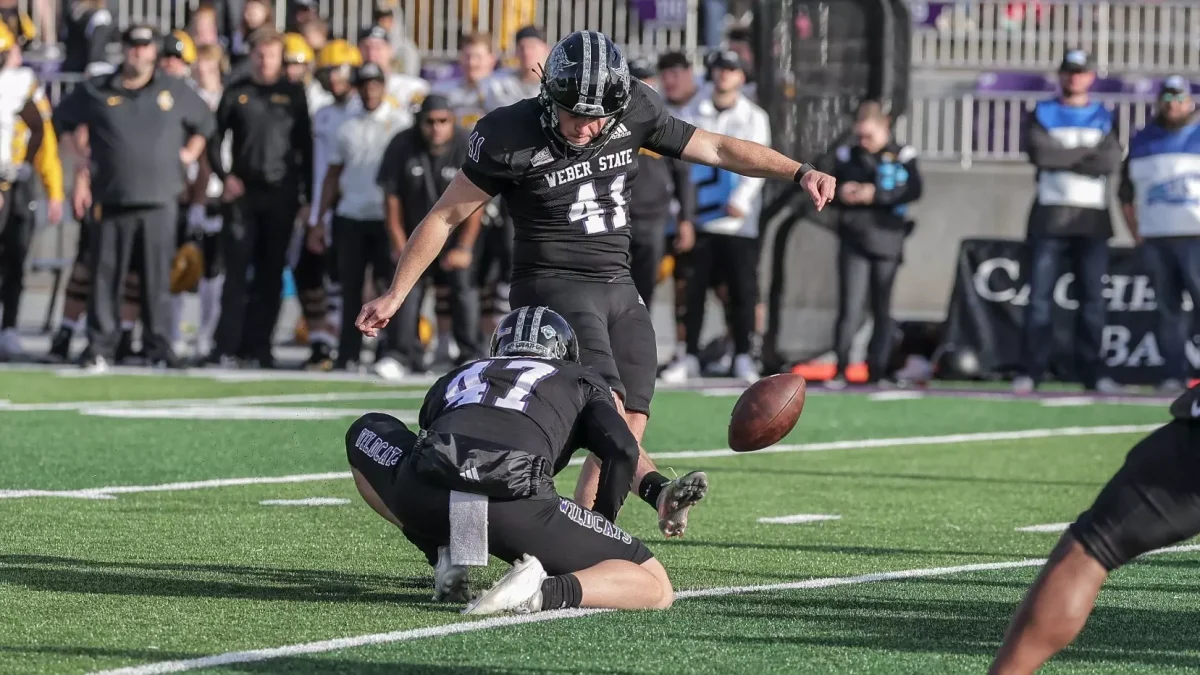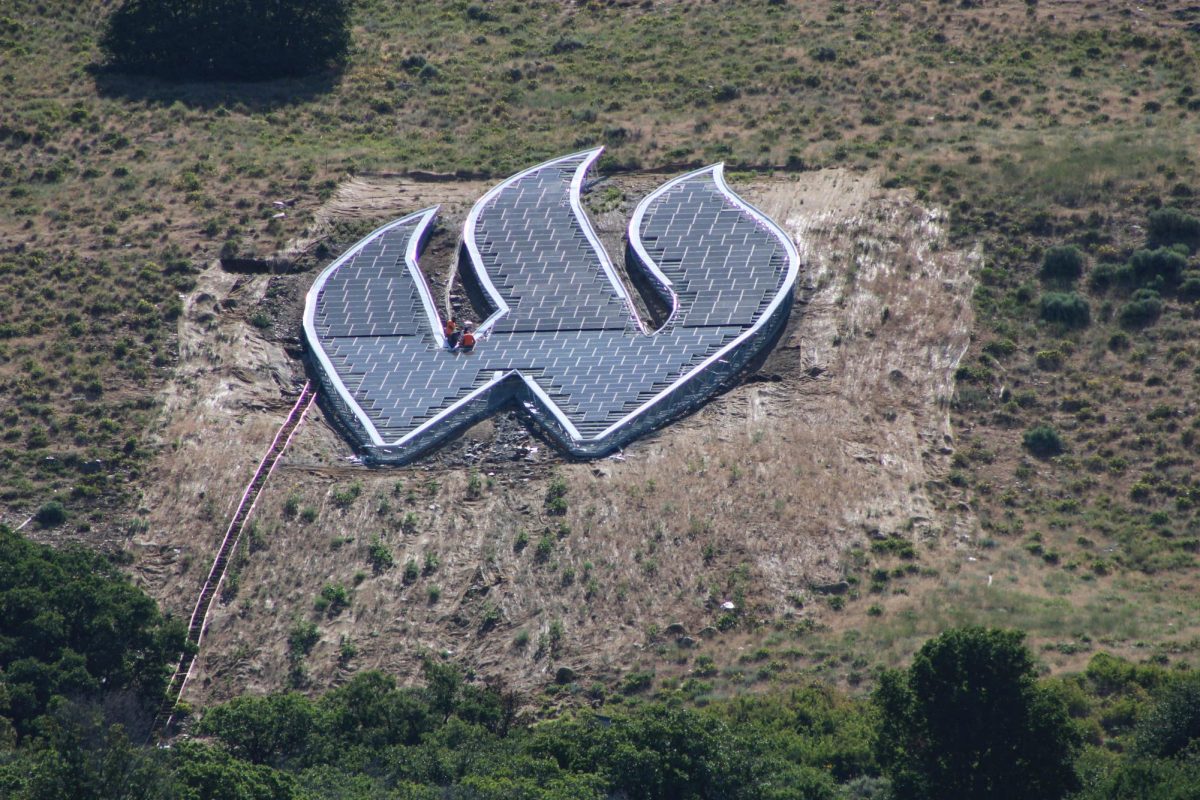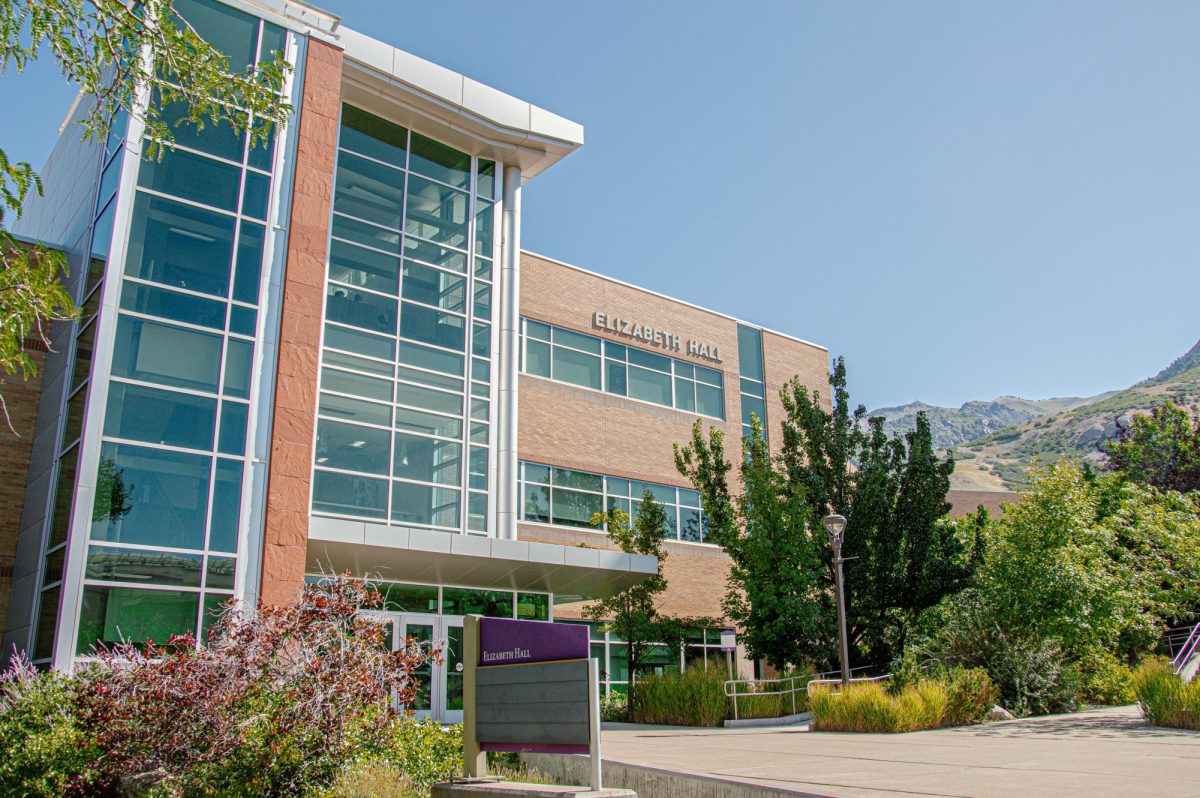Protestors set up in the Shepherd Union on the morning of Nov. 4 in response to the white supremacist posters put up in at least the Shepherd Union and the Student Services building on the morning of Nov. 1. The protest coincided with a Belonging on Campus event hosted by Assistant Vice President for Diversity and Chief Diversity Officer Adrienne Andrews.

The sit-in protest took place on the second floor in front of Einstein Bros. with minority students and allies alike sitting together with signs and handouts. Terri Hughes, WSU NAACP chapter president, stated during the town hall that the sit-in would last through the night.
Down the hall, Andrews’ conversation started with heightened emotions and many students shouting over Andrews as she tried to talk. University President Brad Mortensen, Public Safety Director Dane LeBlanc and Coordinator of Leadership Programs Sheldon Cheshire made their way to the town hall, where they would answer questions the students had regarding the posters and campus safety for the next two hours. Campus police officers also made their way to the town hall as tensions seemed to escalate.

Students present for the town hall expressed their concern with not being alerted about the posters that had been put up and taken down before they had arrived that day. They were concerned that, despite the flyers not having an explicit violent message and being quickly dealt with, the flyers themselves could be indicative of violence against minority students on campus.
Cheshire told students about halfway through the town hall that he had been the one to take down the posters at around 7:30 a.m. on Nov. 1. He said he had canvased the building for an hour to make sure there were no other flyers that had been posted and didn’t see any others.
This is the third reported incident of white supremacist material being placed on the campus in the last three years, with the other two in 2018 and 2019. The Annual Crime Statistics do not list any hate crimes in those years.

Several students at the town hall mentioned two other incidents involving race in the last two years at WSU: the videos made about former WSU Debate coach and instructor Ryan Wash and former criminal justice professor Scott Senjo’s racist tweets during the Black Lives Matter protests in June of 2020.
In 2019, a student named Michael Moreno secretly recorded Wash during a class and posted edited audio on YouTube calling Wash “racist” and “anti-white” based on examples used during class lessons involving race and hypothetical debate strategies. Those videos are still available.
Wash eventually resigned from his position after him and his team were harassed and doxxed but attempted to rescind his resignation shortly after, but it was not accepted. Moreno left Weber shortly after as well.
Senjo tweeted several racist and threatening tweets regarding Black Lives Matter protestors and encouraged violence against them, including encouraging people to run them over. Senjo resigned, rescinded his resignation and resigned a second time between June and July of 2020.
Students pointed to these repeated instances of racism and bias as a deeper issue at WSU, both in the administration and in the student body. Every student who spoke said that they did not feel safe at WSU, whether it was because of their race, sexual orientation or gender identity. Staff members expressed their own feelings of doubt and danger when speaking up for students of color of faculty and staff concerns regarding race because of the loss of possible job security.

“I’m not blaming it on you or the faculty that are here right now, I’m blaming Weber State,” one international student said to Mortensen. “Why? Because these people work for Weber State. Who are they getting the yes from?”
Mortensen listened to the concerns of the students present and those they represented.
“It’s something we’re working on, and it shouldn’t be as hard as it is,” Mortensen said. “I pledge to do better.”
Students were not satisfied with that answer and pushed for more specific answers on how Weber would respond. Mortensen spoke about steps being taken and the University’s new Strategic Plan that was introduced this semester and the Diversity Advisory Board that is being set up.
“It’s going to be an iterative process,” Mortensen said. “But that’s what I’m here for. We’ll organize another event before the end of the semester and share a report on some of the actions that you talked about today.”

The sentiment from many of those who spoke after these comments was that it still wasn’t enough to make them feel safe, sharing their own stories of racism experienced on the campus from faculty members.
“I don’t want to be apart of that University,” Mortensen said. “I’m here to make sure it is not that way.”
A follow-up email was sent out at about 8 p.m. for those at the impromptu conference who signed up to begin the process to better notify students of events like this.
Following the protest on Nov. 4, University President Brad Mortensen scheduled an impromptu meeting on Nov. 5 in the Diversity and Inclusion Center with protestors and campus diversity leaders and advocates.
Joining Mortensen for the conversation were Vice President of Academic Affairs and Provost Ravi Krovi and Executive Director of Marketing and Communications John Kowalewski.
Prior to the meeting, Mortensen also sent out a campus-wide email announcement to students at 11:45 a.m.

The email explicitly condemned the flyers that had been found on campus on Nov. 1.
“On Monday morning, two hand-written flyers containing the message ‘It’s Okay To Be White’ were taped on the north and south entry doors of the Shepherd Union Building,” the email said. “The letters ‘IOTBW’ were also spelled out in duct tape on the western exterior of the union. This phrase has been used frequently on signs and stickers on college campuses across the U.S. to promote white supremacy.”
The email continued, “Any form of racism is unacceptable at Weber State University. We condemn the actions of those responsible for these flyers.”
The email also reiterated a new council to the president of the university, the President’s Diversity and Inclusion Advisory Council, which was announced during the Nov. 4 meeting.
The meeting began with the reading of the email and reiterated many of the same questions and concerns posed to Mortensen and Andrews during the “Belonging on Campus” conversation that coincided with the sit-in protest held in the Shepherd Union atrium.
Mortensen said if the person who posted the signs was found, they would be charged with criminal mischief for defacing public property, but the content of the signs would not have a weight in those charges. However, there are policies and procedures in the student code that could lead to the consequences from the university as well.

Mortensen also addressed what campus changes could be made, including diversifying campus staff and faculty and making adjustments to make faculty and staff feel safer to speak up when they see problems in their classrooms and departments, including holding a staff forum where staff will be able to speak freely without fear of repercussion.
Several members of both conversations spoke about how they feared their own jobs may be in jeopardy because of the time they spent at the protest or because they spoke out at all.
Mortensen addressed those concerns by saying he had reached out to HR the day previously to ensure that nothing staff said during either conversation would be held against their employment.
Students were also concerned with the lack of administration representation and that several key members, specifically Andrews, were not present for the conversation.
For staff who were present and had been present for the past two days, they felt very isolated and upset others had not taken the time to come or been contacted to make them aware of an important conversation happening.
Both Mortensen and Kowalewski addressed their own concerns with not being available or understanding the climate or culture on campus because of what Mortensen called the “Miller Administration Bubble.”
“The Miller Administration Building can be a bit of a bubble. We said that during COVID, and it was a bubble away from students,” Mortensen said. “I don’t think it’s just a COVID thing. We are away from the campus climate. It’s insulated. You can work in that building and walk from the parking lot and never see a student.”
While students were concerned with how in or out of touch the administration was with the feelings on campus, they were just as concerned with the lack of resources and communication from the administration and from campus as a whole. One of the suggestions bade was to have a Black Student Center that mirrored the Center for Multicultural Excellence or other resources on other Utah institutions’ campuses.

A second concern that was brought up was the lack of a resource to report harmful statements made by faculty or staff on campus. An example brought up by an international student was a professor telling them they could never succeed at Weber State or in America.
Kowalewski informed the group of the resource available under the Safe@Weber resource tab on the bottom of each page on the Weber website to make a report. It was noted by several people and administrators present that it was not easy to see that it wasn’t a resource for non-sexual assault or harassment concerns.
Kevin Blanch, a faculty member that was also a student at Weber State, encouraged students to keep pushing past the status quo and keep disrupting.
“This is a major accomplishment. I’ve been on this campus for over 50 years. This fact that Brad Mortensen is here says something,” Blanch said. “Don’t be afraid. You’re college students, it’s your job. You have to keep doing this. This is your world, we’ve already bleeped it up bad enough.”

Mortensen also addressed cries for the Blaylock Report that had been asked for by many spaces on campus and not yet released. Mortensen promised it would be released by Nov. 12.
Additionally, Mortensen scheduled a follow-up meeting on Nov. 12 at 2:30 p.m. in a bigger space to allow for larger attendance where the Blaylock report could be discussed after its release and post and and next steps would addressed in more depth after time could be taken to address these concerns among administrators over the next week.



















